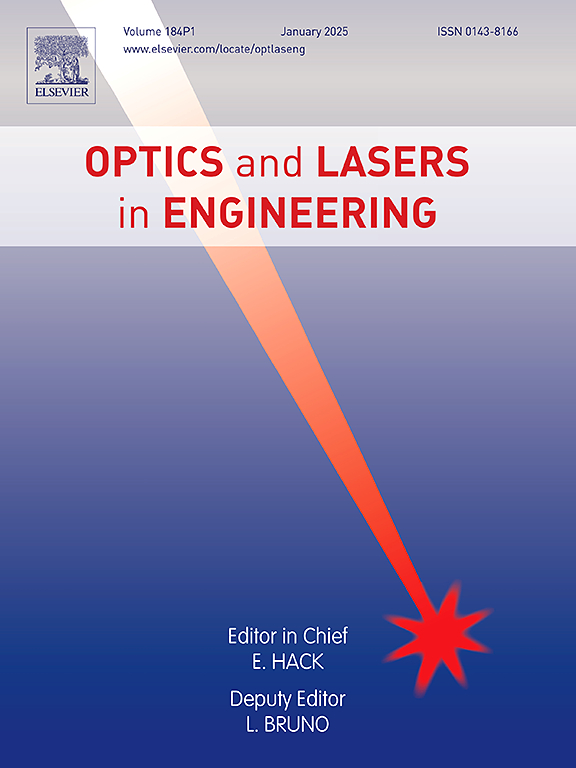An automated system for 2D building detection from UAV-based geospatial datasets
IF 3.5
2区 工程技术
Q2 OPTICS
引用次数: 0
Abstract
The focus of this manuscript is on integrating optical images and laser point clouds carried on low-cost UAVs to create an automated system capable of generating urban city models. After pre-processing both datasets, we co-registered both datasets using the DLT transformation model. We estimated structure heights from the LiDAR dataset through a progressive morphological filter followed by removing bare ground. Unsupervised and supervised image classification techniques were applied to a six-band image created from the optical and LiDAR datasets. After finding building footprints, we traced their edges, outlined their borderlines, and identified their geometric boundaries through several image processing and rule-based feature identification algorithms. Comparison between manually digitized and automatically extracted buildings showed a detection rate of about 92.3 % with an average of 7.4 % falsely identified areas with the six-band image in contrast to classifying only the RGB image that detected about 63.2 % of the building pixels with 25.3 % pixels incorrectly identified. Moreover, our building detection rate with the 6-band image was superior to that attained by performing traditional image segmentation for only the LiDAR DEM. Shifts in the horizontal coordinates between corner points identified by a human operator and those detected by the proposed system were in the range of 10–15 cm. This is an improvement over traditional satellite and manned-aerial large mapping systems that have lower accuracies due to sensor limitations and platform altitude. These findings demonstrate the benefits of fusing multiple UAV remote sensing datasets over utilizing a single dataset for urban area mapping and 3D city modeling.
无人机地理空间数据集二维建筑物自动检测系统
本手稿的重点是整合光学图像和低成本无人机携带的激光点云,创建一个能够生成城市模型的自动化系统。在对两个数据集进行预处理后,我们使用 DLT 转换模型对两个数据集进行了共同注册。我们通过渐进形态滤波器估算激光雷达数据集的结构高度,然后去除裸露地面。我们对光学和激光雷达数据集生成的六波段图像应用了无监督和有监督图像分类技术。在找到建筑脚印后,我们通过几种图像处理和基于规则的特征识别算法追踪其边缘、勾勒其边界线并识别其几何边界。通过比较人工数字化和自动提取的建筑物,我们发现六波段图像的检测率约为 92.3%,平均有 7.4% 的区域被错误识别,而仅对 RGB 图像进行分类则检测出约 63.2% 的建筑物像素,有 25.3% 的像素被错误识别。此外,使用六波段图像的建筑物检测率也优于仅对激光雷达 DEM 进行传统图像分割的检测率。人工操作员识别的角点与建议系统检测的角点之间的水平坐标偏移在 10-15 厘米之间。与传统的卫星和载人航空大型测绘系统相比,这是一个进步,因为传统的卫星和载人航空大型测绘系统由于传感器和平台高度的限制,精度较低。这些研究结果表明,融合多个无人机遥感数据集比利用单一数据集进行城市区域测绘和三维城市建模更有优势。
本文章由计算机程序翻译,如有差异,请以英文原文为准。
求助全文
约1分钟内获得全文
求助全文
来源期刊

Optics and Lasers in Engineering
工程技术-光学
CiteScore
8.90
自引率
8.70%
发文量
384
审稿时长
42 days
期刊介绍:
Optics and Lasers in Engineering aims at providing an international forum for the interchange of information on the development of optical techniques and laser technology in engineering. Emphasis is placed on contributions targeted at the practical use of methods and devices, the development and enhancement of solutions and new theoretical concepts for experimental methods.
Optics and Lasers in Engineering reflects the main areas in which optical methods are being used and developed for an engineering environment. Manuscripts should offer clear evidence of novelty and significance. Papers focusing on parameter optimization or computational issues are not suitable. Similarly, papers focussed on an application rather than the optical method fall outside the journal''s scope. The scope of the journal is defined to include the following:
-Optical Metrology-
Optical Methods for 3D visualization and virtual engineering-
Optical Techniques for Microsystems-
Imaging, Microscopy and Adaptive Optics-
Computational Imaging-
Laser methods in manufacturing-
Integrated optical and photonic sensors-
Optics and Photonics in Life Science-
Hyperspectral and spectroscopic methods-
Infrared and Terahertz techniques
 求助内容:
求助内容: 应助结果提醒方式:
应助结果提醒方式:


